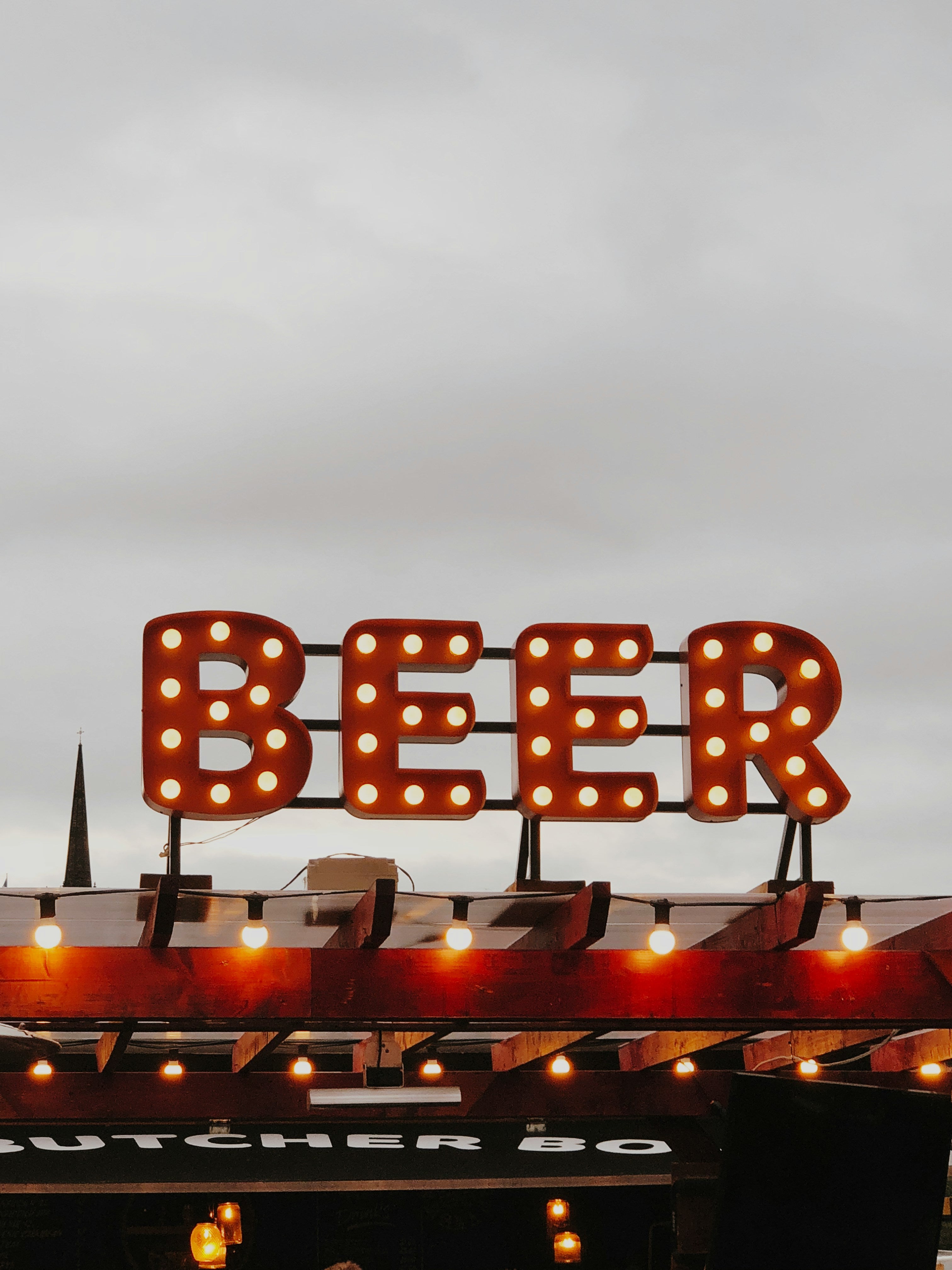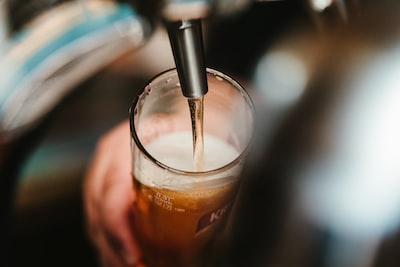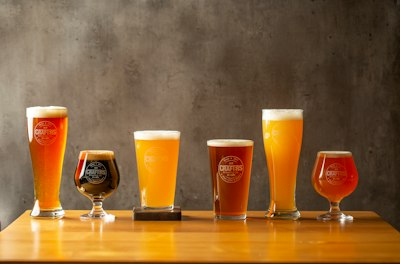
Crafting the Future: How Botanical Beers Are Changing Brews
Botanical beers are having a moment. This craft trend isn't just about throwing in any old botanical or flower; it's an art, one that blends history with innovation to create something entirely new yet rooted in tradition. Brewers are reaching back through time, reviving ancient practices and tastes once common before hops dominated the scene.
What can you expect from this deep dive into botanical brews?
You'll get the lowdown on how breweries are bringing back forgotten flavors and how others use ingredients like ginger or lavender for a modern twist. Plus, we’ll explore how these alternative bittering agents could be a smart move against hop market unpredictability. And if that’s not enough, we'll see why health-conscious consumers might pick up a bottle of botanic beer next time they're browsing the aisles.

Table Of Contents:
- The Revival of Botanicals in Brewing
- The Craft of Flavor: Botanical Ingredients in Beer
- Brewing with Caffeine-Containing Plants
- Economic Benefits of Alternative Bittering Agents
- The Business Case for Botanical Beers
- Consumer Trends Driving Botanical Beer Popularity
- Sustainability and Sourcing of Botanical Ingredients
- FAQs in Relation to Botanical Beers
- Conclusion
The Revival of Botanicals in Brewing
Beer has a storied past, stretching back over 7,000 years. Yet hops have only been part of the recipe for around 1,200. This leaves a long tradition of hop-less brews waiting to be rediscovered.
Brewers are now reaching into history's pantry to spice up their batches with botanicals like lemon myrtle and anise myrtle—bringing unique Australian flavors into the mix.
Back to the Roots with Botanical Brews
Intrigued by ancient recipes, craft brewers are turning away from traditional ingredients. They're using plants like riberry alongside well-known ones such as coriander and orange peel.
This shift is more than just about taste; it's also about crafting stories in every pint. It connects drinkers not only with new flavors but also with beer's deep roots.

Forbidden Root's Specialization in Botanic Beers
Forbidden Root Brewery, based out of Chicago, leads this charge by focusing on beers that use minimal hops. Instead, they harness herbs and spices for flavoring—showcasing what can happen when you step off the beaten path.
The Craft of Flavor: Botanical Ingredients in Beer
Brewers are turning back the clock, drawing inspiration from ancient traditions to infuse their creations with botanicals. They're using everything from lavender and rosemary to more exotic ingredients like lemon myrtle.
Left Hand Brewing Co.'s Good Juju
Fresh, organic ginger isn't just for cooking; it's Left Hand Brewing Co.'s secret weapon. In their summer seasonal beer, Good Juju, this zesty root adds a spicy kick that makes each sip feel like sunshine in a bottle. Ginger’s robust flavor bridges the gap between traditional brew tastes and innovative twists—making it an unforgettable experience.
Anise myrtle also sneaks into today's craft beers as brewers chase unique flavors that stand out in a crowded market. Its licorice-like taste offers complexity without overpowering the palate—a delicate balance mastered by only the most skillful brewers.
Barrel-Aged Innovation at Jester King Brewery
Jester King Brewery doesn't play by conventional rules—they prefer innovation through barrel aging with an aromatic bouquet of lavender, rosemary, and spearmint. Their farmhouse ale is not just another beer; it's an olfactory adventure, blending herbaceous notes with earthy undertones for a truly avant-garde concoction.
This creative use of herbs nods to our ancestors' wisdom while embracing modern techniques—a duality present across various breweries which incorporate such diverse elements as juniper berries and vanilla beans into their offerings for bold new tastes.
Brewing with Caffeine-Containing Plants
When it comes to crafting a unique brew, some innovators in the beer industry are turning their attention to caffeine-containing plants. This isn't just about the buzz—these natural ingredients can impart distinctive flavors and aromas that set a beverage apart.
Cervecería De MateVeza, for example, is known for brewing all of their beers with yerba mate—a plant teeming with not only caffeine but also antioxidants and vitamins. It's an ancient herb steeped in history, now finding its way into modern craft beers.
The inclusion of such botanicals offers drinkers something beyond the ordinary hop-forward profiles; it invites them on a sensory journey through subtle energy lifts coupled with rich herbal notes. As brewers explore these alternatives, they're tapping into new layers of taste complexity while catering to consumers seeking novelty in their beverages.
This trend does more than tantalize taste buds—it serves as a nod towards sustainability by diversifying sources of bitterness and aroma traditionally dominated by hops. Breweries like Cervecería De MateVeza showcase how embracing native botanicals such as lemon myrtle or anise myrtle can lead to innovative products that reflect both traditional influences and contemporary tastes.
Economic Benefits of Alternative Bittering Agents
Botanicals are changing the game in brewing, offering a way to dodge hop shortages and price hikes. Breweries have found that ingredients like lemon myrtle and anise myrtle not only bring unique flavors but also serve as economical bittering agents.
Hops, though essential for many beers, can be unpredictable in supply. Botanical alternatives provide brewers with more control over their ingredient list and costs. It's a strategic move; when hops are scarce or expensive, having botanicals on deck keeps production steady without breaking the bank.
Brewers who embrace these alternative bittering agents aren't just surviving—they're thriving by tapping into new markets. Craft beer enthusiasts often seek out unusual brews and flavors, so breweries using distinct botanical blends stand out on the shelves creating intrigue among consumers looking for something different.
The rise of botanic ingredients isn't just about economics—it's about innovation too. By diversifying flavor profiles beyond traditional hops, craft breweries are expanding what beer can be. And while they're at it, they’re carving out niches within an increasingly competitive market—a smart business move any day.
The Business Case for Botanical Beers
Breweries are tapping into a growing niche market by infusing their beers with unique botanicals. This isn't just about brewing something different—it's about innovation and appealing to consumer curiosity.

Key Stats: The increased use of botanic ingredients adds variety and creativity to the craft beer landscape.
Brewers who diversify their portfolios can catch the eye of adventurous drinkers looking for novel flavors. With hop shortages causing headaches, turning to plants like lemon myrtle or anise myrtle makes sense—they offer complex tastes without relying solely on hops.
This strategy is more than creative; it's smart economics too. By using alternative bittering agents, breweries hedge against price volatility in the hops market—a move that could save them big time when supply gets tight.
Sustainability and Sourcing of Botanical Ingredients
Sustainable sourcing is key when it comes to botanicals in brewing. Brewers must ensure they're getting high-quality ingredients without straining natural resources or local ecosystems—a responsibility both ethical and practical.
Finding reliable suppliers takes work but pays off by ensuring consistent flavor profiles that keep customers coming back. It’s all part of crafting not just a drink, but an experience—one steeped in history yet innovative at its core.
Consumer Trends Driving Botanical Beer Popularity
Seeking Novelty and Variety
Brewers are tapping into the adventurous palates of beer enthusiasts, who crave new experiences. This thirst for innovation has led to an uptick in beers infused with unique botanicals like lemon myrtle and anise myrtle. The allure isn't just about flavor—it's a journey through history and culture, connecting drinkers to ancient traditions.
The use of hops is relatively recent in the long timeline of brewing; their widespread cultivation only dates back around 1,200 years. Before that, early beers often had sweet profiles due to a lack of bitter agents. Now breweries are revisiting these historical roots by experimenting with native Australian flora that offer complex taste dimensions beyond traditional hop bitterness.
Health-Conscious Choices
A shift towards healthier lifestyles has also permeated the craft beer scene. Consumers now lean towards beverages they perceive as having health benefits—even when indulging in alcohol—making botanical ingredients increasingly attractive.
Lemon Myrtle boasts high levels of citral while Anise Myrtle contains linalool—compounds linked with relaxation and digestive benefits—which can be compelling selling points for wellness-minded individuals exploring alcoholic options. These elements not only enhance the aroma and palate but also give consumers more reasons to choose botanically brewed beers over standard offerings.
Sustainability and Sourcing of Botanical Ingredients
Botanicals are making a big comeback in brewing, but getting them isn't always easy. Brewers keen on creating sustainable beers face real challenges when sourcing high-quality botanicals like lemon myrtle and anise myrtle.
Challenges in Sourcing Quality Botanicals
Brewers often struggle with inconsistent supply chains that can affect both availability and quality.
To maintain consistent flavor profiles, brewers need suppliers who understand their craft. They seek partners who prioritize sustainability as much as they do, ensuring that each leaf or berry adds to the beer's character without harming the environment.
The key lies in building relationships with growers committed to eco-friendly practices. By doing so, breweries ensure a steady stream of pristine ingredients while championing green initiatives within their industry.
FAQs in Relation to Botanical Beers
What is a botanical beer?
A botanical beer incorporates plant elements for flavor, going beyond traditional hops to jazz up the brew.
What is an earthy beer?
An earthy beer has flavors that hint at soil and nature, often from roots or herbs used in brewing.
Is there such thing as organic beer?
Sure thing. Organic beers are made with ingredients grown without synthetic fertilizers or pesticides.

Conclusion
Botanical beers are the past meeting the present. They're a nod to ancient traditions, with flavors that pop and surprise. From Forbidden Root's revival of forgotten tastes to Left Hand Brewing Co.'s ginger zing, there's innovation in every sip.
Taste buds rejoice at Jester King Brewery’s herb-infused farmhouse ale. Brewers use lavender and spearmint not just for kicks but as smart plays against hop shortages too.
And let’s talk buzz—breweries are even infusing caffeine-rich plants into their brews now! That's variety; that's creativity; that's botanical beers changing the game.
You came looking for what’s fresh in brewing, and you found it: from sustainable sourcing challenges to consumer thirst for novelty—and health-conscious picks—it all flows back to these botanic blends. The future looks bright, full of new twists on old classics!


